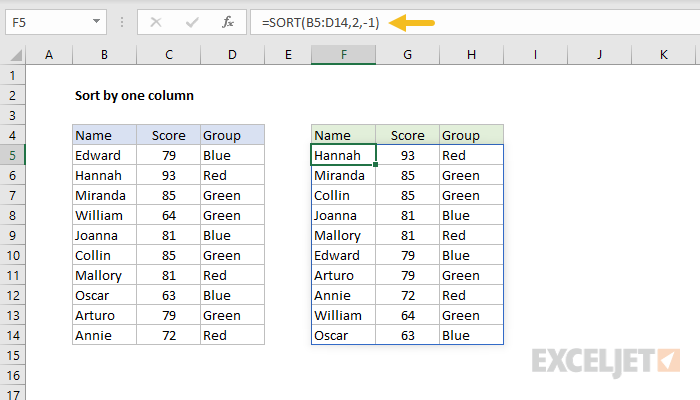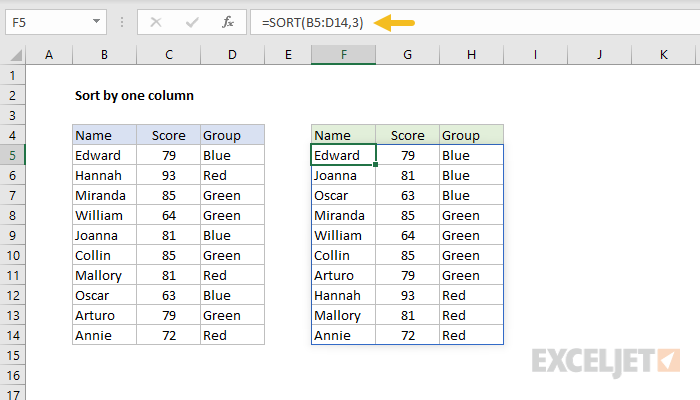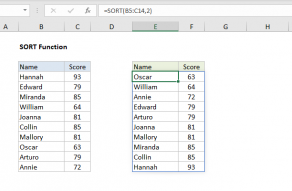Explanation
The SORT function requires very little configuration. In the example shown, we want to sort data in B5:D14 by the third column, Group. For array, we provide entire range, B5:D14. For sort_index, we provide 3:
=SORT(B5:D14,3)
With this formula in F5, the SORT function outputs the sorted array in F5:H14.
Ascending vs. Descending
Data is sorted in ascending order (A-Z) by default. This behavior is controlled by an optional third argument, sort_order. The default value for sort_order is 1, so both formulas below return the same result as shown in the example above:
=SORT(B5:D14,3)
=SORT(B5:D14,3,1)
To sort in descending (Z-A) order, set sort_order to -1. In the example below, we are sorting data in descending order by score, which is the second column:
=SORT(B5:D14,2,-1)

Dynamic Array Formulas are available in Office 365 only.








